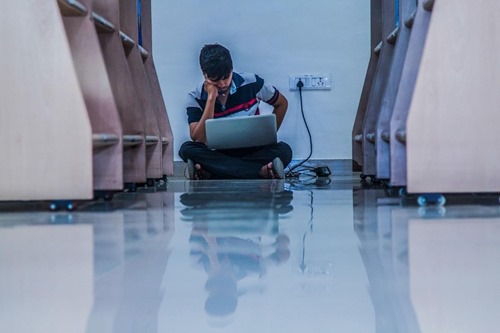The Tech Education business has not only grown bigger but also churns out new billionaires like other careers. For instance, Deloitte revealed that the Chinese tech education market is projected to hit $715 Billion by 2025, besides creating seven new billionaires. Li Yongxin is an excellent example of a billionaire who invested in tech education that offers civil service exams for trainees both offline and on an online platform.
It is a major source of income for professionals in various fields who don’t prefer employment in the formal sectors. Today, technology is an essential tool both as a pedagogical resource and connecting with the younger generations. Here are some of the technological trends that could disrupt education in 2020, moving forward:
- The emergence of automated schools
- Personalize education systems
- Ease of access to education
- Practical Experience in education
- Data-driven Insights
First, it would be better to begin this discussion with the technologies that influence these trends. Artificial Intelligence (AI) is one technology that has been used to achieve unimaginable advancements in human life.
Similarly, educators have realized the benefits of AI in supplementing teaching and learning in schools. For instance, AI is useful when educators need to gather and analyze data that is crucial for personalizing learning, selecting effective learning tools and interventions. Scholars postulate a future where technology will guide the decisions made by learning institutions through artificial intelligence systems. Therefore, the institutions will have no option but to figure out ways to integrate technological solutions.
How the Emergence of Automated Schools Could Disrupt Education
Many schools already anticipated the tech revolution in the education sector and adopted some aspects of technology. For instance, some institutions already use the online assessment automation system to evaluate learners. Besides, educators have found the system to be interactive, flexible, and valid for teaching purposes.
Automation will not cease at online assessment but extend to face recognition technologies capable of tracking turnout, analyze performance data, and automate administrative duties. Perhaps it would help teachers make informed decisions without straining to analyze massive data. Although people think of automation as a ploy to replace teachers, it should be perceived as a tool that facilitates learning. For instance, we should look at automating class attendance as a means of relieving teachers of the tedious task of marking the registrar rather than eliminating their roles. Another rising concept yet less popular in the education world is essay writing service online providers or online tutorials.
Personalized Education Systems
Personalized education is not a new concept, but technology can even make it better. Learning is becoming more diverse with the incorporation of online learning to complement class teaching. Some classes are also offered exclusively online, but tech education helps teachers better understand the students’ educational requirements.
Understandably, the world is dynamic and moving fast towards the 4th Industrial Revolution with an urgent need to implement integrated learning for collating data aside from the main curriculum. So, rather than burden teachers with testing and grading, institutions should automate the activities to free up some time for teachers to bond with students. It seems technology will offer reprieve on the teachers’ part than anticipated.
Accessible Education for Students
The demand for quality education is increasing, while institutions struggle to provide the necessary infrastructure to accommodate all these learners. Based on the United Nations estimates, about 263 million students lack access to full-time education. So, how do learning institutions offer quality education while providing accommodation and resources for all these students? Well, distance education is one of the practical solutions to these problems because it is accessible across borders and remote areas.
Besides, it is cheaper because there is no need to print books, provide books in libraries, commute from home to school, and many more. Perhaps, what educators should fear more is many students enrolling for online classes than offline sessions. If tech education gets to that point, many teachers risk becoming jobless in the future. Already, some institutions have rolled out this system for specific courses while some are at the pilot stage.
H2: Incorporating Practical Experience in Education
Advancement in technology has brought some innovations, such as augmented learning and virtual reality, that offer exciting and diverse learning experiences. For instance, a lesson on ancient Egypt could be more exciting and productive if students can walk around a digital version of history in real-time. Perhaps, it would also lessen teachers’ workload while improving the quality of education.
Data-Driven Insights
The commercial sector has utilized technology to scrutinize student results and produce more data-driven insights that could be useful in education. For example, teachers will find data-driven insights helpful in identifying various shortcomings in content delivery and individual problems. Technologies like AI has been used to generate big data capable of monitoring the performance of millions of students as well as recommend a suitable curriculum for each student. Generally, technology will bring positive disruption in education more than it will destroy it.


